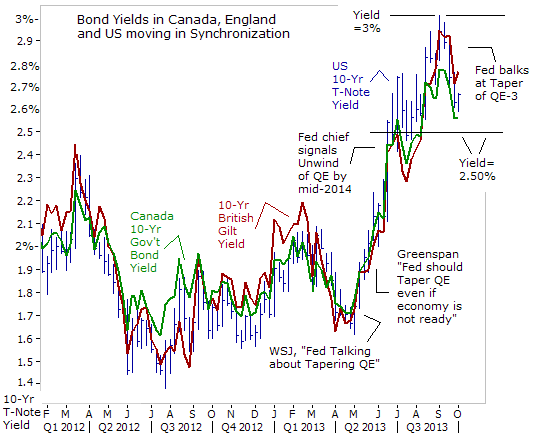Analysis As Fed tapers don t count out emerging market currencies
Post on: 22 Сентябрь, 2015 No Comment
By Gertrude Chavez-Dreyfuss
NEW YORK (Reuters) — When the Federal Reserve first started talking about cutting its massive stimulus earlier this year, emerging-market currencies went into a tailspin. This time round, investors don’t see that happening.
Throughout the summer, while U.S. equities held relatively steady, riskier foreign markets were crushed, and their currencies battered by talk of a Fed pullback.
Now, many investors are convinced the Fed’s tapering won’t cause that kind of market volatility again, and U.S. rates won’t spike, just rise slowly. If that’s the case, investors will be emboldened to move back into emerging currencies.
The Fed cuts started this week when it reduced its monthly bond-buying to $75 billion from $85 billion. A reduction in the Fed’s quantitative easing is supposed to benefit the greenback because it would raise U.S. rates, making those assets more attractive. It also curbs the supply of cash that tends to flow into riskier assets such as emerging market economies.
Some emerging market debt and currencies have become more attractive over the last six months, fund managers said, and the Fed’s decision has not diminished their allure.
Once the cat (Fed tapering) is out of the bag and the outcome should be much lower volatility than what we saw in the past, market participants will likely return to the emerging market world by buying the more solid fundamental names with attractive valuations and higher interest rates, said Thomas Kressin, senior vice president and head of European foreign exchange at global bond fund PIMCO in Munich, Germany.
Traders don’t expect the Fed to hike interest rates earlier than July 2015.
When the Fed previously suggested it might start winding down its stimulus, some emerging market debt and currencies tumbled. The Indian rupee, for instance, has lost 11 percent this year.
There has been significant underperformance in emerging market debt, not only in May and June, but also recently when rates have risen as well, said Mike Swell, co-head of global lead portfolio management, at Goldman Sachs Asset Management in New York, which manages more than $349 billion in fixed income, currency and commodity assets. cut?
On the other hand, the Mexican peso has proven more resilient, falling just 1.1 percent in 2013, along with the South Korean won, which actually gained 0.2 percent.
Pimco’s Kressin, for one, thinks a long Mexican peso and short U.S. dollar trade is one of the more intriguing bets for 2014. With the U.S. outlook improving, Mexico is expected to benefit because of its strong trade relationship with the world’s largest economy.
One-year volatility on the Mexican peso has dropped to 12.1 percent on Friday from highs of 15.02 percent in early September. The Mexican peso’s volatility has become a barometer of risk for emerging market currencies because of the breadth of that market.
PRESSURE FOR SOME EMERGING MARKETS
Countries that have to import capital to finance domestic spending such as South Africa and India could see their exchange rates suffer, while those with surpluses such as Mexico won’t feel as much of a pinch.
In Mexico’s case, not only do investors think its economy is fundamentally sound, its assets have higher returns as well. Mexico’s 10-year government bonds yield 6.33 percent, compared to the U.S. ten-year note of 2.92 percent.

The Mexican peso, meanwhile, is 5 percent undervalued against the dollar, according to Commerzbank researchers.
From a developed market-perspective, Mexico can give you stable returns, without having to incur a lot of risk, said Mario Robles, director and head of Latin American research at Commerzbank in New York.
Swell said Goldman has added emerging market debt — both local currency as well as in dollar, with an emphasis on Latin America. Latin America has underperformed both from a rate perspective and currency perspective.
Some fund managers have cited Brazil’s currency and debt as value plays in the midst of the Fed’s tapering. The Brazilian real has fallen nearly 14 percent this year, and some fund managers think it will stabilize in 2014.
The U.S. dollar is currently trading at 2.36 reals, and Standish Asset Management thinks despite the tapering, the greenback will be contained within the 2.20-2.40 trading band.
We think the Brazilian real is fairly valued, said Federico Garcia Zamora, director of currency strategies and senior portfolio manager at Standish Asset Management in Boston, which oversees assets of about $163 billion.
He noted Brazil’s returns of between 10-12 percent on short-term bonds with maturities ranging from one to three years. This allows investors borrowing in lower-yielding currencies more carry trade cushion, and the selloff in the real makes it a more attractive time to put on such trades.
The combination of the two has made us more comfortable in the emerging market space, he said.
(Editing by David Gaffen and Andrew Hay)














